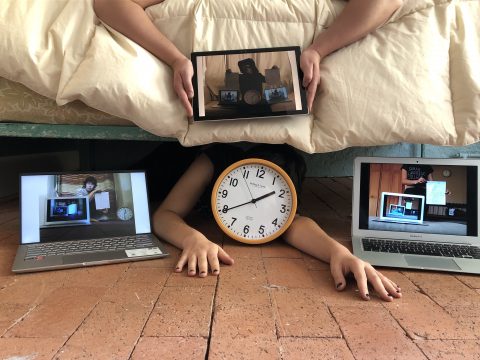
My conference project, titled “Feedback Mother”, focuses on definitions of motherhood and the labor of care. This is a durational performance piece that lasted from 10:00 am on Thursday, December 3rd to 6:33 pm on Friday, December 4th. The entirety of the piece was streamed live from a closet in my apartment in Talpa, New Mexico.
The foundation of this project stemmed from ideas I encountered while in an Anthropology of Kinship class in the 2019-2020 school year. In this class we analyzed different definitions of motherhood in different populations around the world. In many western cultures, to be a mother one must birth and/or raise a child. In this context “mother” is a noun. This is not a universal definition. In many cultures “mother” is a verb. To the Tiv people of western Africa, for example, you are a mother to someone if you feed, clothe, or house them.
It was around this time that I was also experimenting with fermentation in my dorm at Sarah Lawrence. It struck me that the starter for many fermentations is referred to as “the mother”. During this time I also became aware of and fascinated by the way in which the wild yeasts and bacteria that are unique to each individual’s skin and breath can affect the fermentation process of foods. One person’s sourdough starter will never be like any others because of the unique microbiome they introduce into the mother.
For this project, I asked three individuals (a participant who chose to remain anonymous, my girlfriend, and myself) to each write a short composition regarding their relationship to Motherhood, either in mothering, being mothered, or some combination of the two. I then asked them to speak their compositions into a jar, introducing their bacteria and yeasts into it through telling their story. These were the jars I then used to ferment three distinct foods in– brined eggs (the anonymous individuals contribution) , mustard (my girlfriends contribution), and ginger beer (my contribution). By doing this, I created three distinct mothers out of these three unique stories of motherhood.
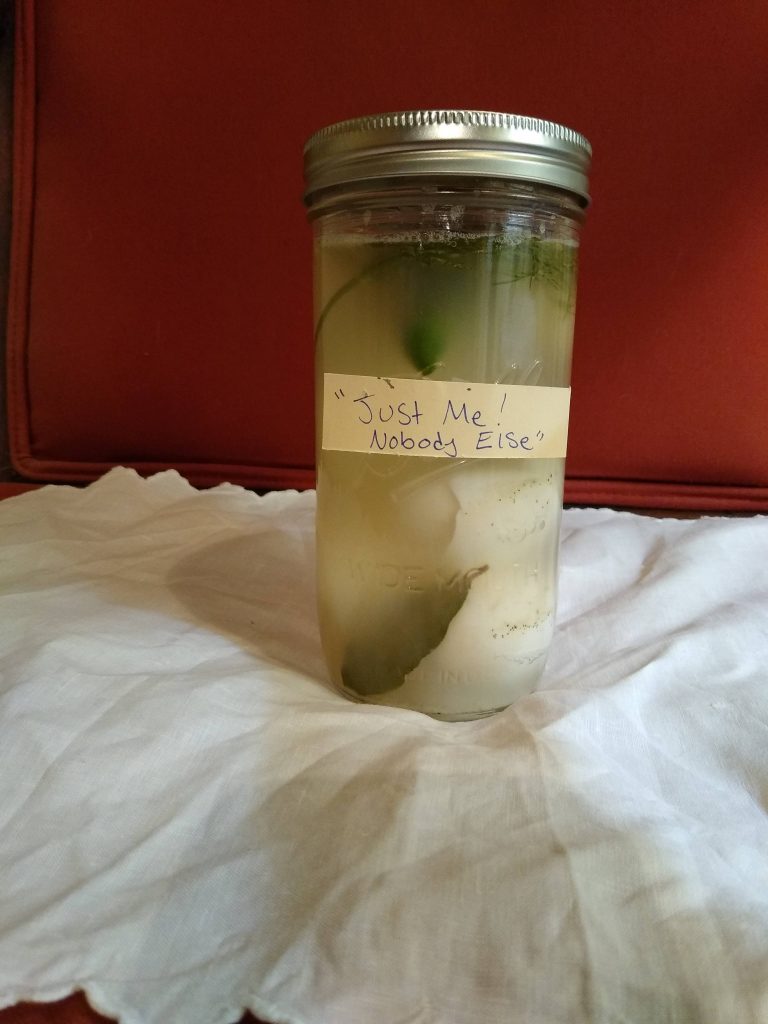

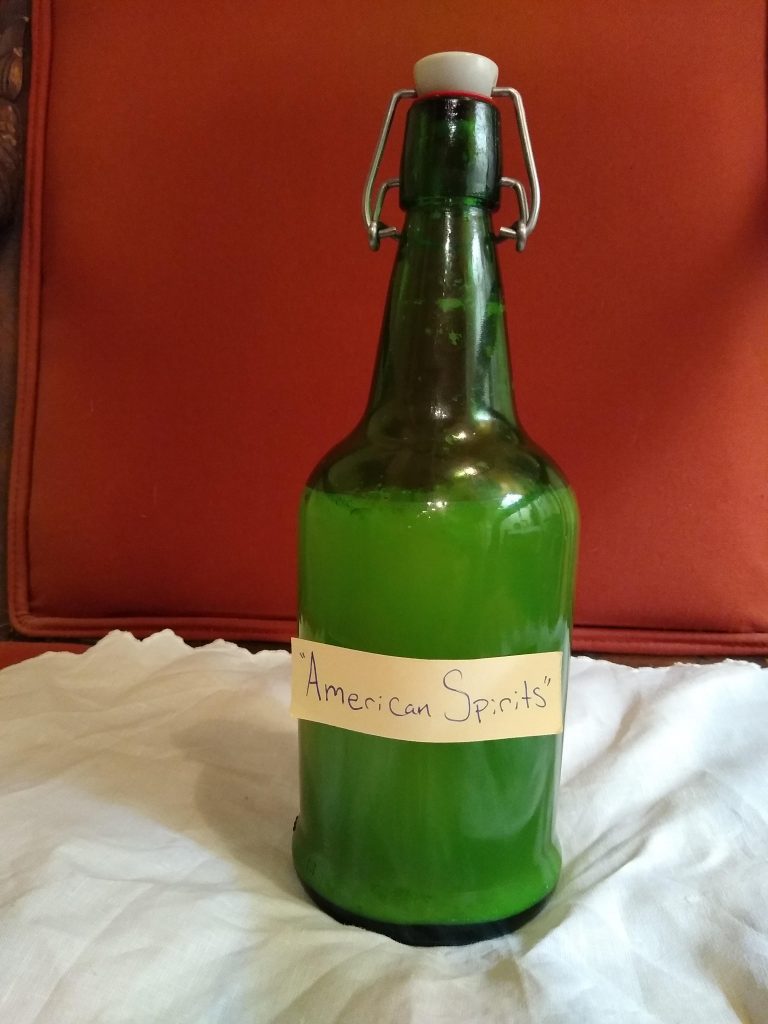
I then set up a nursery-like living space in a coat closet in my apartment, and for the subsequent 33 hours and 33 minutes after I started the fermentation process, I spent nearly every moment in this nursery caring for (mothering) these mothers made of stories of mothers. I slept, ate, and went to class in this space. I purchased two livestream baby monitors and set them up so that “audience members” could see and interact with me during this process. One (labeled “audience”) was placed at the other end of the room across from the closet, and the other (labeled Over Head) was mounted above me.
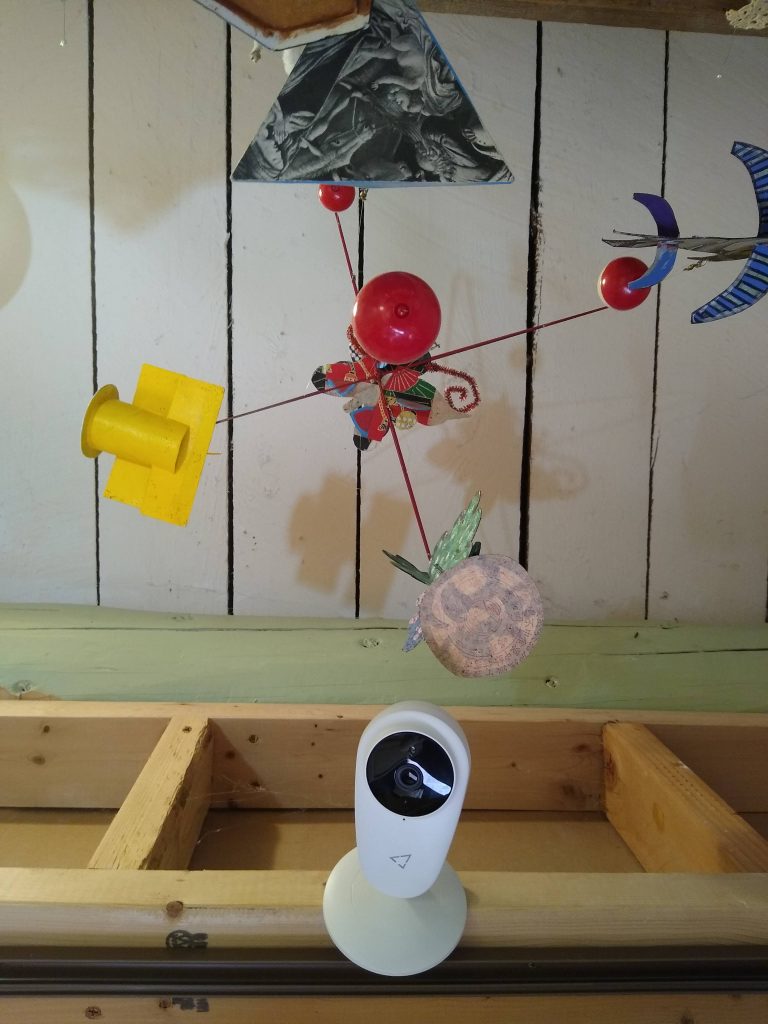
I documented the development of each of the mothers, taking polaroids of them at noon and midnight and pinning them on the wall behind the chair I sat in for the duration of the piece. Every two waking hours I would write a journal entry recording my thoughts and feelings about each of the fermenting mothers, as well as my time in the closet.
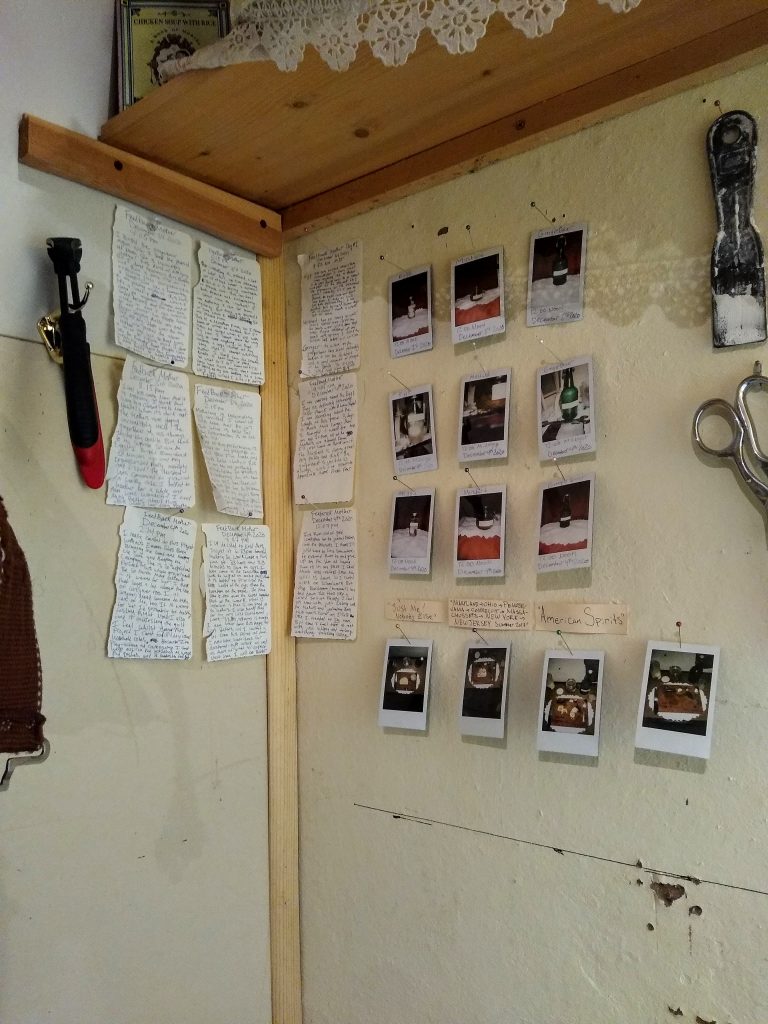
At the end of the 33 hours and 33 minutes of mothering these mothers made of stories of motherhood, I created a meal composed of all three of the foods. I then shared this meal with another one of the participants, therefore mothering myself as well as her by creating this meal. I also delivered a similar meal to the third participant in the piece, who will remain unnamed. This final act of motherhood completes this complex feedback loop of care.
This process was incredibly labor intensive, demonstrating the intense and often unrecognized and uncompensated labor of caregiving and motherhood. Additionally, in detaching this form of motherhood from any biological or gendered identity or role, this project highlights that mothering is not dependent on gender or biology.
When I initially developed this project in its current iteration, I planned on asking anywhere between 5 and 10 people to participate in the project by donating their stories and microbiomes. What with a massive COVID-19 spike in New Mexico, work, and online school, I quickly realized that collecting that many stories would not be feasible. I reduced the amount of participating storytellers to three, which ended up appearing many times in the project. There were three mothers, three sets of timestamped polaroids, three sets of three journal entries, three bandages, three mouse traps, and three sharp tools pinned to the wall, and finally a thirty three hour and thirty three minute run of the piece.
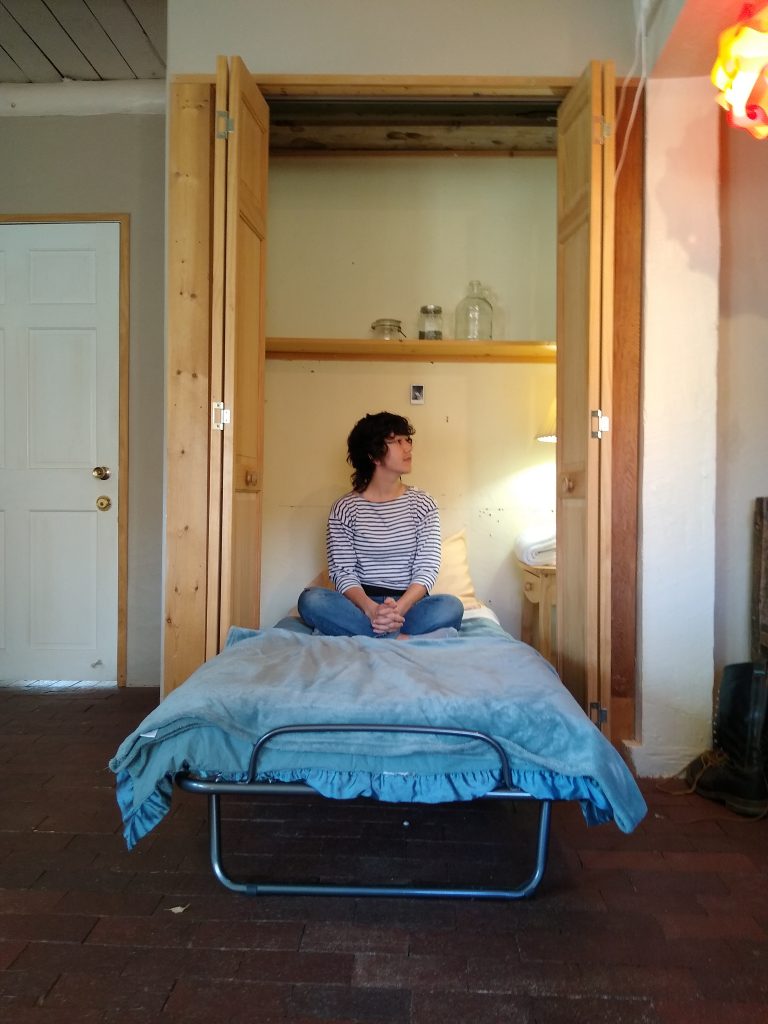
The first iteration of my living space was incredibly minimalistic. The closet contained only a small cot, a night stand and a lamp, and the three jars I would be mothering. I wanted to highlight the labor of the mothering I would be doing, by removing any possible distraction in the space. I also wanted to distance the project from any gendered or bioessentialist readings by including as few objects in the work as possible. This did not work very well, however. The space felt cold, boring, and indicated no sense of mothering.
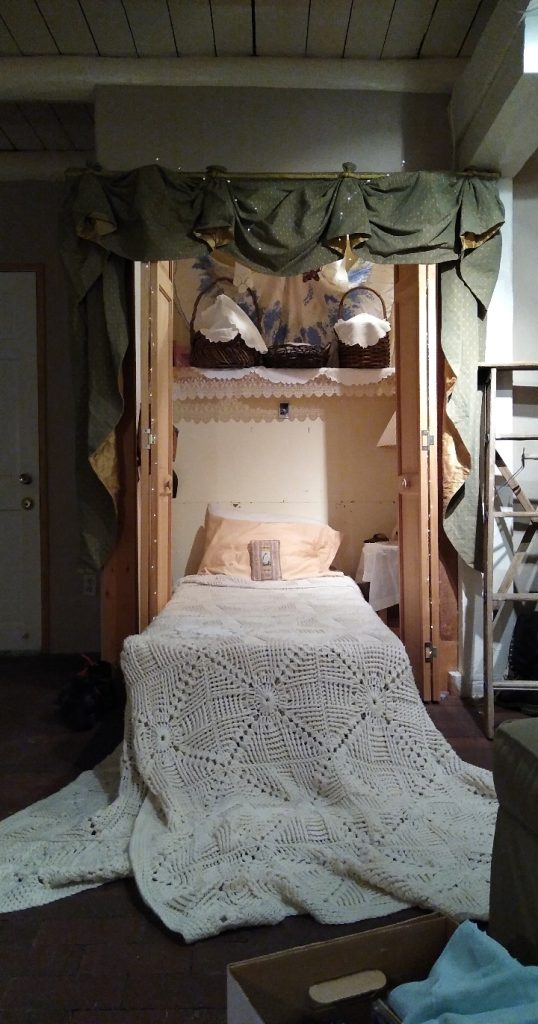
This led me to my second design. I hyper embellished the piece with imagery that would point to mothering without necessarily being about femininity. I included many objects that had a lot of personal or familial significance. One of which was a pillow my mother used as a totem to protect me while she was pregnant with me, as there was some concern about my survival to birth. Another of which was a mobile that a family friend made for my older sister when she was born. I also added a lot of victorian inspired embellishment to invoke a very classic mothering vibe. I added baskets to hold the mothers and covered them in lace to invoke a bassinet. I added a massive crocheted bedspread to the cot I would be sleeping in, and I brought many portraits of family members into the closet as well. This did not work how I wanted it to.
In critique, my classmates interpreted the space as hyper-femminine, with no sense of the labor of this care, nor of the genderlessness I was reaching for. To them, it seemed to focus on birth, on womb based motherhood, which was not my intention. They also hyper-fixed on the pillow that belonged to my mother, which I only intended to be a minor addition to the work. Some classmates interpreted it as very religious, and others even went so far to say that my project could be interpreted as anti-abortion. This was, to say the least, distressing to me. None of what I wanted to communicate in this piece was coming through. Instead, many themes that I did not intend were taking up an immense amount of space in the work. I grew frustrated; I wanted to quit.
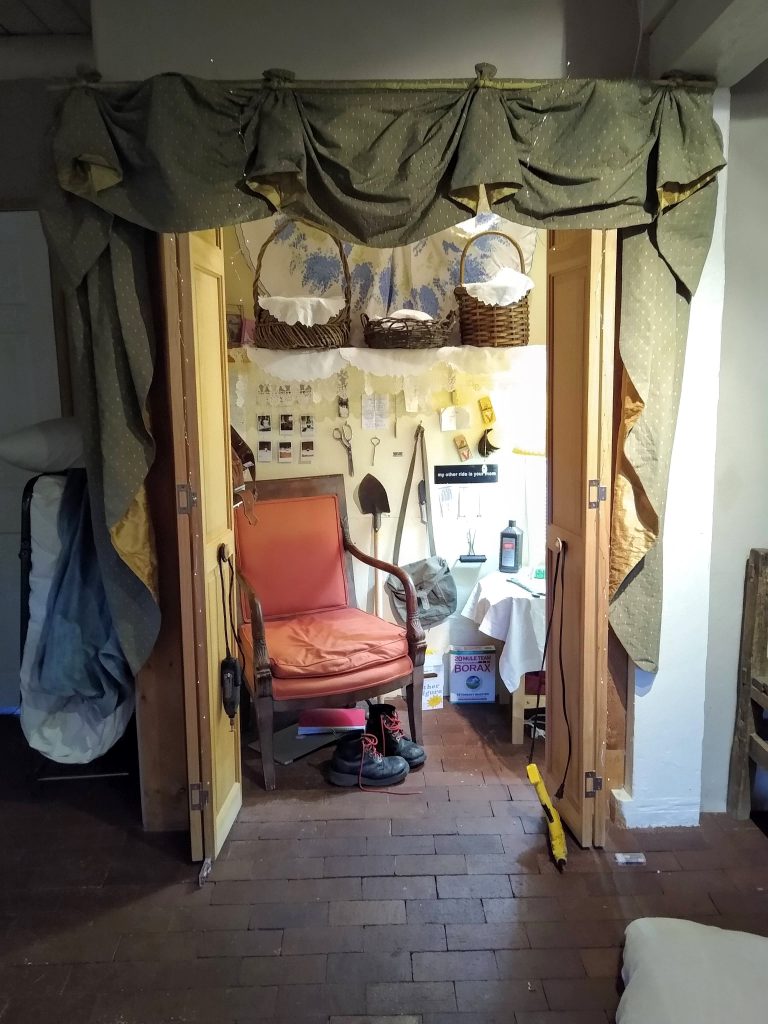

After an incredibly helpful and enlightening conference, however, I got back to work. I removed many of the aspects that led my peers astray, kept the ones I liked and that were fruitful to the work, and added a mishmosh of new objects to the space. I decided to only keep the bed in the closet when I would be sleeping in it, and would spend the rest of the time in a red easy chair. I removed the massive bedspread I had put on the cot and replaced it with a plain blue blanket. I brought in many tools and items I associated with the genderless labor of mothering into the closet.

I pinned three mousetraps to the wall to symbolize the protective and sometimes violent nature of mothering. You must kill the mice to protect what you are caring for. I added a paint key, a pair of fabric scissors, a knife, and a razor blade to the wall. Mothers are the ones who open things and who cut things smaller for those who can’t. I added the three bandaids for a similar reason. To patch up a wound is to mother. I included notes from my grandmother, notably instructions she left for me for how to cook steel cut oats. Although she is my mothers mother, in this moment she mothered me by teaching me more ways to feed myself. I leaned a sharp tipped shovel against the chair, acting as both a symbol of the back-breaking labor of care, and as a symbol of protection. In that chair, I was a sentry armed with my shovel. Finally, I added a bumper sticker (which is now on my car) that reads “my other ride is your mom”. I brought this bumper sticker into the space because I thought it was funny, and I didnt want to take myself or this project too seriously. At this stage of the closet design, I felt very satisfied.
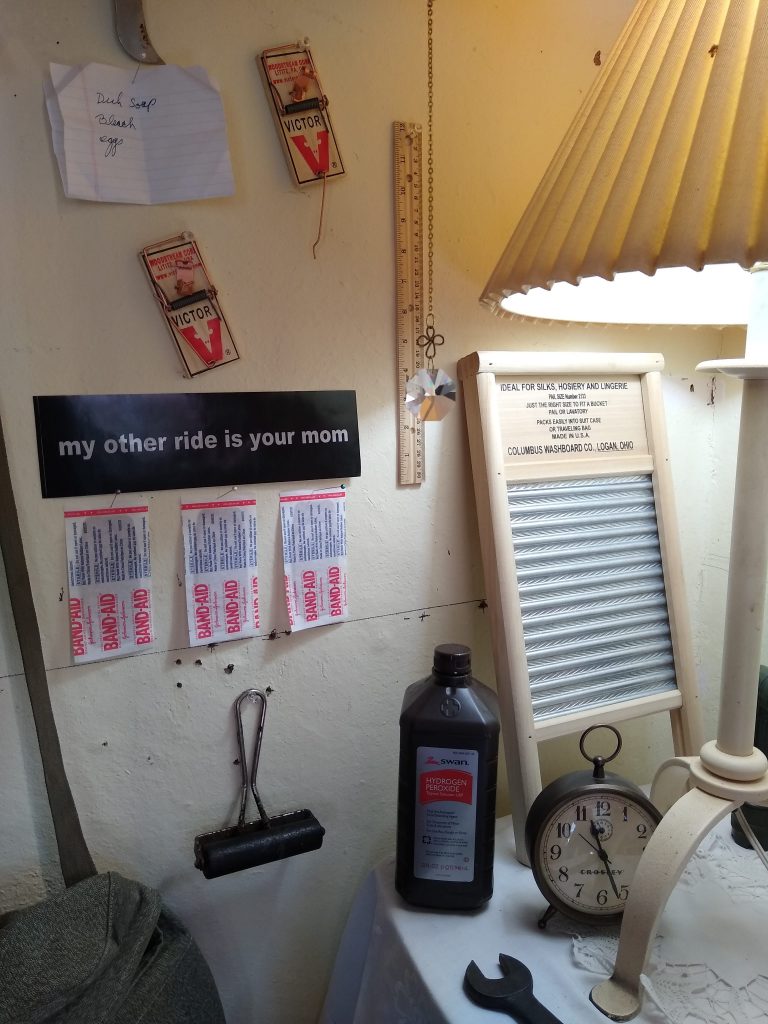
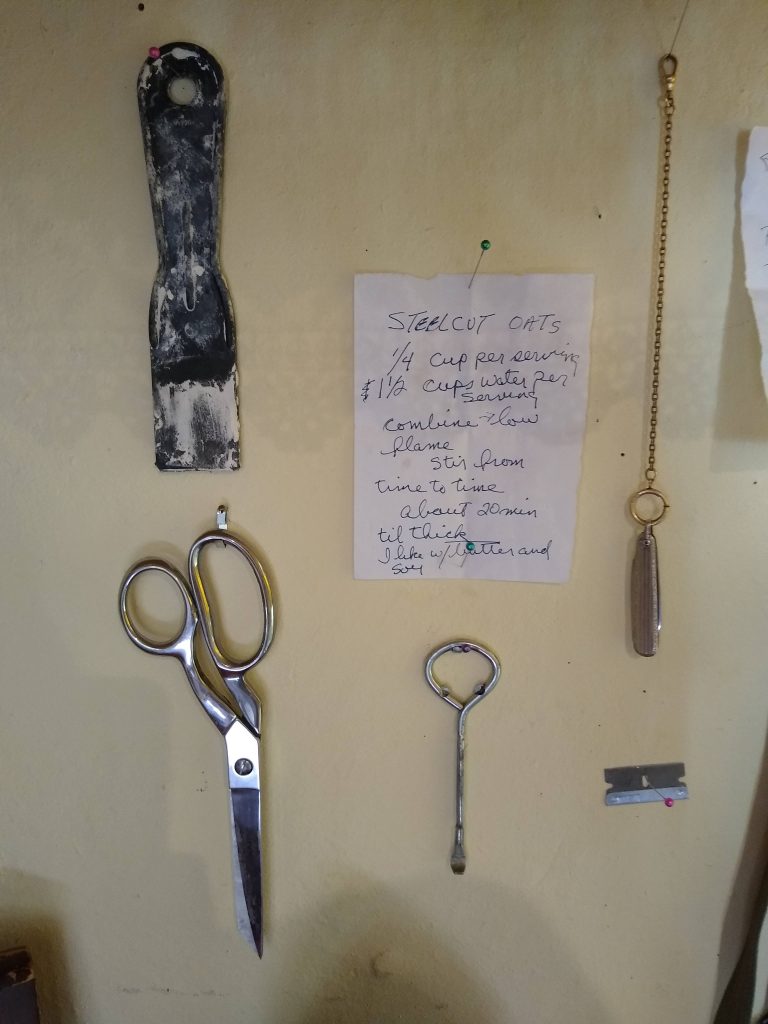
In my initial proposal of the project, I wanted it to run for a week. I then decided to reduce the run to three days to keep with my pattern. While I was performing the piece, however, there was a change of plans.
I had never done a durational performance piece prior to embarking on this project. My first journal entry, written at 9:50 am on December 3rd, is full of excitement and nervousness. This entry is very formal, and focuses primarily on the progress of the mothers and the fermentation process. The next entry, written at 12:15 pm on December 3rd, is much more contemplative about the process of the piece itself, and documents more of my trepidation towards this new style of performance. This trend only continues throughout the first 12 hours of the piece. I gave myself a very strict set of rules for this piece, but not a very set ritual. I had to write an entry every two hours, photograph the mothers every 12, regularly depressurize or “burp” the mothers every so often, as well as pace with them for 5 minutes each in the morning and in the evening. These tasks only took up so much time. I still had hours of time spent just watching over the mothers, unable to leave the immediate area of the closet. At 2:15pm on December 3rd, I wrote:
“ Mothering is interesting… I want to fuss more over the jars, but what is best for the fermentation is for them to rest. Most of this performance is based on my presence in this space I’ve made and with these Mothers. This is very new and uncharted territory for me. In previous “performances” they are more active, and I have more of a goal. But here, the performance is just me, as myself, being alive in a designated space with some food. Its a little uncomfortable! I dont know what to do with myself.”
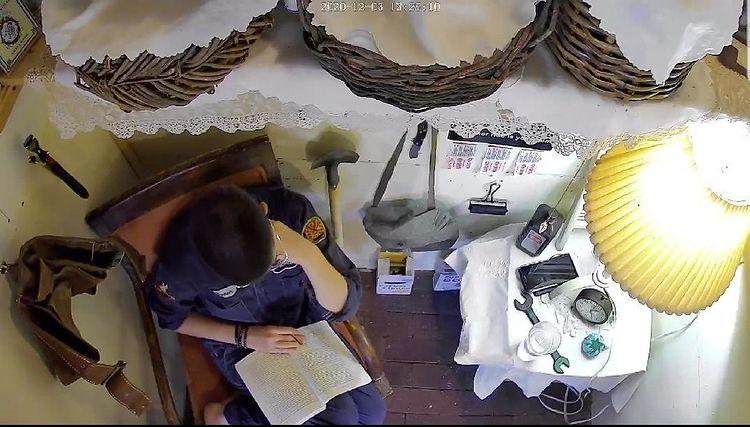
By midway through the second day of the performance, I felt incredibly strange. I spent all of the time that I was not actively caring for the mothers mostly thinking and staring off into space. Most similar projects by other artists I was familiar with had more of a routine. I had foolishly decided that I didnt need more regular tasks to do. By this point, I was getting more agitated and restless, and was getting stuck in my own head. I was uncomfortable, and I felt like I was neglecting the rest of my life. My entry at 2:14 pm on December 4th reads
“I really couldnt do this project without Emma. Shes been bringing me food and keeping me sane and keeping me company. She is so helpful and perfect. This whole project would be so much more difficult if it werent for her. I think that says a lot about the role of caregiver, too. I, as caregiver, need someone to take care of me, too. If it werent for her, Id probably be mostly fasting right now. I also find it interesting the guilt I feel whilst doing this project. I cant fulfill my usual household roles because im play-acting at caregiving. I cant help out in the kitchen or wash the dishes, and it makes me feel bad.”
At this point, my entry wandered around, and was pretty dramatic and sentimental. I am somewhat embarrassed by this entry, which ended up being my second to last one for a few reasons.
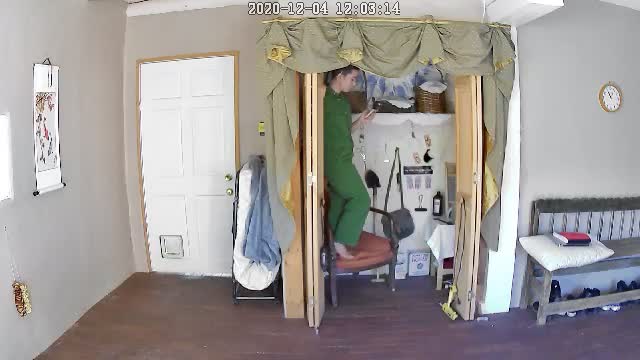
In addition to the amaturely constructed rules of the project, the baby monitors were a major source of stress and exhaustion. When creating this project, the livestream was more of a fun afterthought in my mind. I thought it would be fun for people to be able to see how the project was going. It also seemed like an easy way to document the project. These ideas ended up being true, but there was no way for me to predict how largely the cameras ended up looming in the project. There was no way for me to know when people were watching me through the cameras, and they had the ability to take photos and videos of me at any point without my knowledge. On top of that, people could talk to me through the monitors at any time with no warning. This was phenomenal in a lot of moments. I was able to talk to friends, mentors, and members of my community. It was very reassuring and made the piece more exciting for me in moments of downtime. On the other hand, there were instances where people would set off the alarm that was built in to the cameras, or say unsettling things about what I was doing, or play terrifying music. This, I did not like one bit.
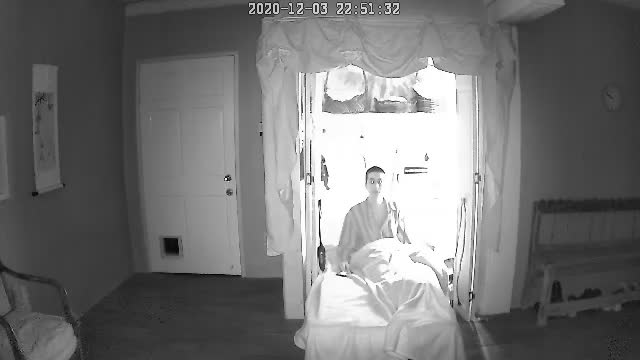
Finally, the care I was providing to the mothers ended up making them ferment faster than I had predicted. I think that my body heat aided in the quick fermentation. I became worried about the eggs, because if I let them over-ferment they would spoil. I did not want to be living in a closet with a jar of rotten eggs, nor did I want to jeopardize the health of the mother and the story it contained. This, combined with the stress of both the security cameras and my naive (but still exciting) design of the project lead me to end the piece early, rather than spending the three full days in the closet. At 6:33 pm, I brought down all three mothers, carefully opened them, and crafted the final meal.
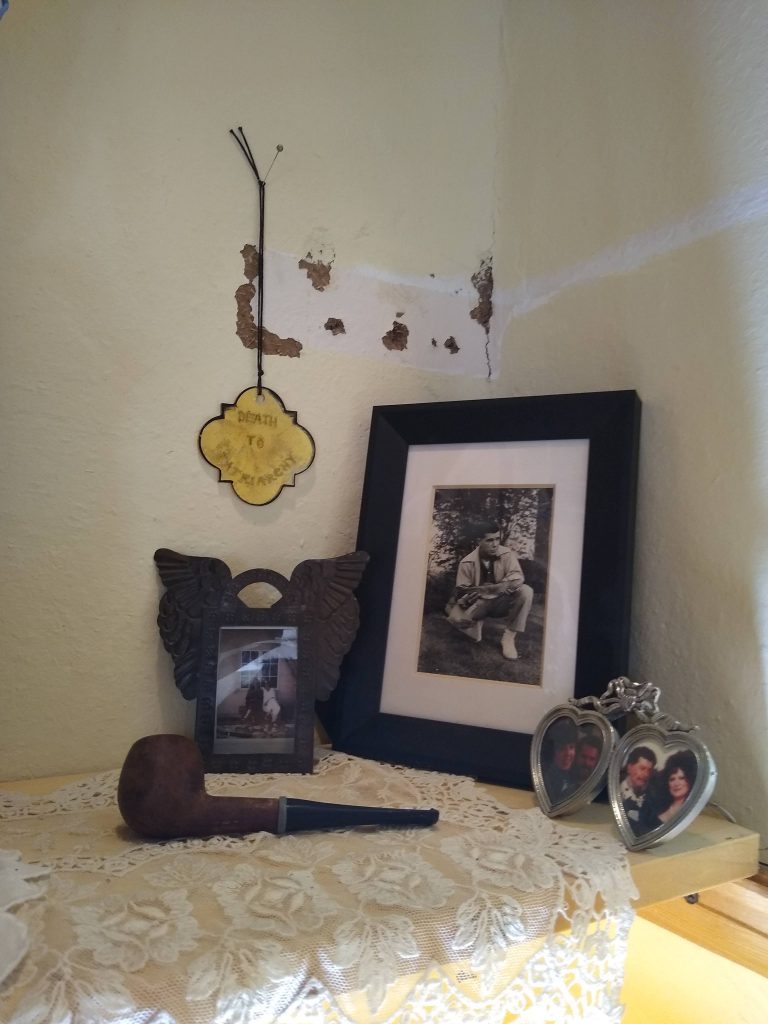
Overall, I learned so incredibly much from this project, and I hope to do it again in another iteration later. I will hopefully be able to do it in a public space, and can remove the component of the security cameras, because although they were very interesting and added a very strange twist to the work, they took up more space than I wanted them too. Eventually, I hope to do another loop of “Feedback Mother” in which I can collect many stories and create many mothers, which will fill up more time and make for a more enticing piece. But for now, Feedback Mother 2020 has come to a close.
